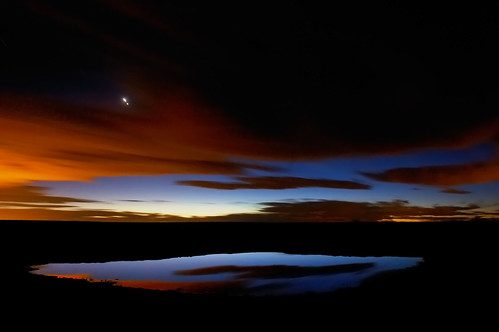Taken with a 300 mm F4 to emphasize how large the moon looked setting. The next night was too late to get this shot as the moon's descent to the horizon was still well above the final fading sunset colors. It reminded me of how Ansel stressed when you see something really special don't wait to go back and get the photo no matter how inconvenient, there's no guarantee you will get a second chance (like his moonrise photo we all know and love).

And here is an image of the crescent moon in the sunset the following evening in a wider more landscape oriented view at Bosque del Apache National Wildlife Refuge:










